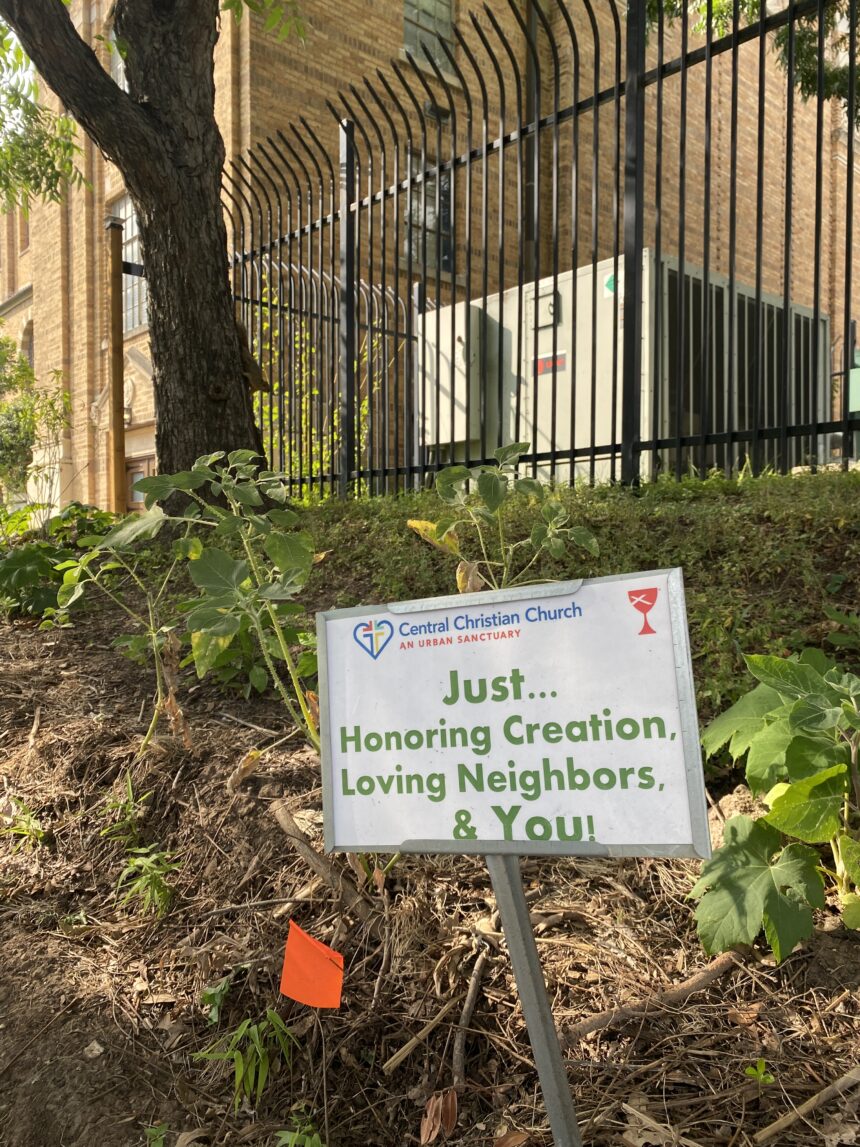Yo howdy all y’all! It is a beautiful day to visit our church (yes, every day is), and to walk around and
about our wilding of downtown wildflowers and gardens for autumn harvest.
It’s been a little more than two years since Pastor Layne began placing inspiring/comforting signs along the softening edges of our sanctuary. The first sign: “Watch this Space! Erosion Control and Wildflower Hillside in Progress!” Right now, the many colors of many flowers embracing our sanctuary are a reward for “watching this space”.
Maybe because he was living in California, Pastor Layne didn’t remember the many Aprils into
Mays of our San Antonio Street hillside being covered with a soft carpet of blooming bluebonnets.
We now again have bluebonnets – and who knows what other wildflowers – abundantly sprouting in
our soil.
The Reverend Doctor Beamer did early on share with us the need to “soften the edges” of church, and to respond – he used other words – to the erosion of Christianity in many a Christian’s life. Composting helps. Accepting the blessings even in the now faded blooms, in discards, in leaves fallen and branches pruned demonstrates the abundance of Grace that is available with active patience on the path. The decomposition of surplus (not waste) leads to gratitude for the nutrients of newly forming soil. Composting in place has helped to form the terraces on our hillsides which help secure in desired places the ground from which we grow Flowers like bluebonnets that grow on hillsides cast their seeds to the ground below, and over time our upper hill became barren; with little to block the rain running down – the bluebonnet and other
seeds, rock and dirt wash into the gutter and the pavement beyond. The hillside was washing away, pits and rivulets were growing, the soil was washing down, becoming infertile the street.
The grounds on which many a church stands today have become fallow, which can be done intentionally – left unsown for a period of time in order to restore fertility. Sometimes, the best intentions become habitual neglect – instead of offering opportunity for fertile growth, the ground becomes hard, often growing only bristles and thorns. We are encouraged – as on one of Pastor Layne’s signs – to remember Hosea 10:12 – “break up your fallow ground, for it is time to seek the Lord…”
So what’s blooming now? Thirty to forty types of bloom on any given day. Flowers that are wildly
reaching into sidewalks, streets and courtyards that bloom at the very tips of their growth.
Thanks y’all for your intuitive understanding as our garden sprawls in areas beyond intended borders. That one massive moonflower by the back door was not human planted – letting some such weeds grow is an ethos of gardening with God. (We have several other unique and unknown species blooming about that were not human planted.) Goodness, though, the courtyard moonflower has gotten big – but it is a different variety (with larger blooms, tinted purple), and so it is being allowed to develop seeds to be shared.
Also blooming is every plant on this week’s Wildflower Center “What’s in Season” list https://
www.wildflower.org/plants- main/whats-in-season , and a whole lot more.
Gardening with God can inspire a lot of work, a lot of patience for natural process, a lot of surprise
and wonder at what grows, a lot of joy and gratitude for abundance shared as a gift to the street,
and a sharing in the abundance of God’s Grace.
Songbirds are still feeding on our abundance of seeds, and monarch butterflies continue to feed on their journey south. A variety of cool weather produce for hungry humans is growing Other passersby find comfort and delight in the gifts to the street that come with our softened edges and welcoming sanctuary.
Be safe, be well, know joy.
Phil

